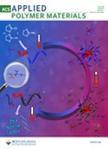版权所有:内蒙古大学图书馆 技术提供:维普资讯• 智图
内蒙古自治区呼和浩特市赛罕区大学西街235号 邮编: 010021

作者机构:Department of Chemical Engineering National Taiwan University Taipei10617 Taiwan Advanced Research Center for Green Materials Science and Technology National Taiwan University Taipei10617 Taiwan Department of Materials Science and Engineering Tokyo Institute of Technology 2-12-1 Ookayama Meguro-ku Tokyo152-8552 Japan
出 版 物:《ACS Applied Polymer Materials》 (ACS Appl. Polymer Mat.)
年 卷 期:2024年第6卷第10期
页 面:5900-5909页
核心收录:
基 金:The authors thank the financial support from the National Science and Technology Council (NSTC) in Taiwan (112-2124-M-002-015- 111-2923-E-002-006-MY3 112-2628-E-002-031- and 112-2223-E-002-008-MY4) and from the Top University Project of National Taiwan University (113PNTUS05)
主 题:Thin film transistors
摘 要:Currently, a common approach to realize high-performance semiconducting polymers is to enhance the coplanarity of molecular chains. Among the numerous design strategies reported to fulfill this requirement, the introduction of vinyl bridges has proved to be one of the most effective approaches. In this study, we designed and synthesized four naphthalenediimide (NDI)-based dual-acceptor conjugated polymers comprising two different second acceptors, including benzothiadiazole (S) and benzotriazole (N), with vinyl bridges inserted to study the structure-performance relationships in transistors. We found that the presence of side chains in S and N causes subtle differences in rigidity, leading to an opposite trend in the vinyl bridge effect. The electron mobility of vNDI-N was successfully improved compared to that of the parent polymer (NDI-N) as a result of the fine optimization of the backbone coplanarity. However, the electron mobility of vNDI-S decreased compared to that of NDI-S. Analysis using UV-vis spectroscopy, simulations, and morphological techniques (AFM and GIWAXS) revealed that the absence of side chains in S leads to challenges in achieving planar bonding with neighboring moieties. This study highlights the importance of considering the rigidity of the coupling acceptors to optimize the ideal backbone conformation of NDI-based dual-acceptor copolymers. © 2024 The Authors. Published by American Chemical Society.